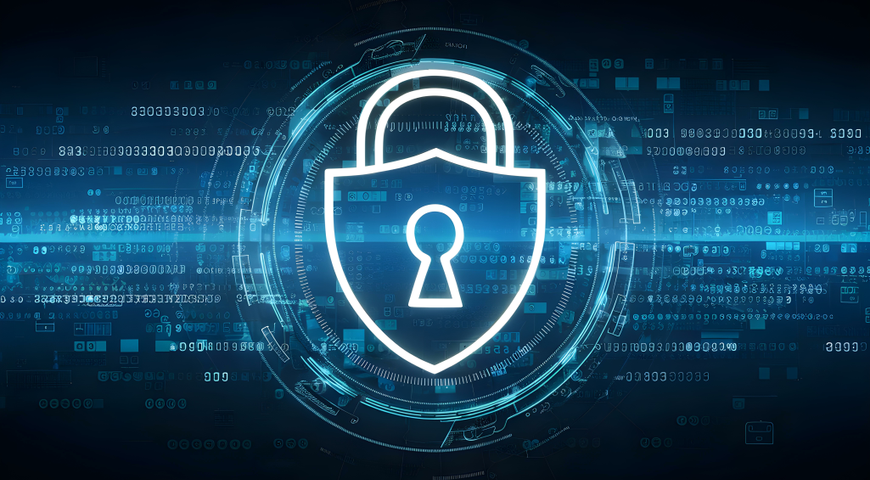
If you’re a managed service provider (MSP) or stakeholder in an organization that wishes to protect itself from cybercrime, it behooves you to anticipate the emerging tactics employed by cybercriminals in the year 2024. From innovative attack vectors to increasingly sophisticated extortion techniques, understanding what lies ahead is paramount for staying resilient in the face of digital threats. Join us as we examine the unfolding landscape of ransomware and explore what to expect in the year ahead.
Ransomware’s recent evolutions
Ransomware, once considered a nuisance primarily targeting individual users. But ransomware has always been evolving, undergoing significant transformations, both in terms of tactics and impact. Up to and throughout 2023, ransomware has evolved into a formidable weapon in the arsenal of cybercriminals, capable of crippling entire organizations and causing widespread disruption.
Initially, ransomware attacks were characterized by relatively simple tactics, such as locking users out of their devices or encrypting files until a ransom was paid. However, as threat actors became more sophisticated, their tactics evolved to target high-value entities like corporations and government agencies. This shift led to the development of more complex ransomware strains, capable of infiltrating networks, exfiltrating data and deploying ransom demands at scale.
Case studies of recent ransomware attacks highlight the devastating consequences of new malware and tactics. Notable incidents, such as the WannaCry and NotPetya attacks in 2017, demonstrated the potential for ransomware to cause widespread disruption on a global scale. More recent attacks, such as the Colonial Pipeline ransomware attack in 2021, underscored the critical infrastructure vulnerabilities exploited by cybercriminals or hostile states for financial gain.
Additionally, the rise of ransomware-as-a-service (RaaS) platforms has democratized access to ransomware tools, allowing even novice threat actors to launch sophisticated attacks with minimal effort. These platforms operate on a subscription model, providing cybercriminals with access to ransomware variants, distribution channels and support services in exchange for a share of the profits.
Predicted ransomware trends for 2024
As we look ahead to 2024, cybersecurity experts predict several significant future trends in ransomware, reflecting both the evolution of cyber threats and advancements in defensive measures.
- Targeted ransomware attacks: Expect to see a rise in targeted ransomware attacks against specific industries or organizations. Cybercriminals are likely to conduct thorough reconnaissance to identify high-value targets, such as healthcare providers, financial institutions or critical infrastructure entities, in order to maximize their extortion efforts
- Double extortion tactics: Double extortion tactics, where threat actors not only encrypt data but also exfiltrate sensitive information to use as leverage, are anticipated to become more prevalent. This approach increases the pressure on victims to pay the ransom by threatening to release or sell stolen data if demands are not met.
- Supply chain attacks: With the increasing interconnectedness of global supply chains, ransomware attacks targeting supply chain partners are expected to rise. Cybercriminals may exploit vulnerabilities in third-party software or services to gain access to their primary targets, amplifying the impact of their attacks.
- Emergence of hybrid ransomware: Hybrid ransomware attacks, combining elements of traditional ransomware with other cyber threats such as data manipulation or destructive malware, are likely to emerge. These attacks aim to inflict maximum damage on victims by not only encrypting data but also disrupting operations or causing irreversible harm.
- Ransomware-as-a-Service evolution: Ransomware-as-a-Service (RaaS) models are expected to evolve further, offering new features and capabilities to cybercriminals. This includes improved encryption algorithms, evasion techniques to bypass security controls, and enhanced customer support to facilitate ransom payment and decryption.
Cybersecurity reports and expert opinions reinforce these predictions, highlighting the escalating threat landscape and the need for proactive defense strategies.
How to counter emerging ransomware threats?
In the face of emerging ransomware threats, safeguarding businesses requires a multi-layered approach that combines proactive prevention, detection, and response strategies. Here's how organizations can protect themselves from evolving ransomware threats in 2024:
Regular employee training
Educating employees about the latest ransomware tactics and how to recognize phishing attempts can help prevent initial infection vectors. Training should emphasize the importance of avoiding suspicious links, email attachments, and websites, as well as the significance of reporting any unusual activity promptly.
Implement robust endpoint protection
Deploying advanced endpoint protection solutions that include features like behavior-based detection, machine learning, and real-time threat intelligence can block ransomware before it can execute on user devices.
Network segmentation and least privilege access
Segmenting networks and restricting user access to sensitive systems and data through the principle of least privilege can limit the spread of ransomware within an organization. This can prevent attackers from moving laterally across the network and accessing critical resources.
Regular data backups and testing
Maintaining regular backups of critical data and ensuring their integrity through periodic testing is essential for ransomware recovery. Backups should be stored securely and offline to prevent them from being compromised in the event of an attack.
Incident response planning
Developing (and regularly updating) an incident response plan that outlines the steps to take in the event of a ransomware attack is crucial. This includes roles and responsibilities, communication protocols and procedures for containing and mitigating the impact of the attack.
Acronis Cyber Protect Cloud is a comprehensive cybersecurity solution that offers integrated backup, anti-malware, and endpoint protection capabilities, making it a powerful tool in battling ransomware trends in 2024. Here are a few ways Acronis Cyber Protect Cloud can help:
Integrated backup and security
Combining backup and security functionalities into a single, integrated solution, Acronis Cyber Protect Cloud ensures that organizations have reliable data protection and ransomware defense capabilities in one platform.
Active protection against ransomware
This tool incorporates advanced anti-ransomware technologies that can detect and block ransomware attacks in real-time, preventing encryption of critical data and minimizing downtime.
Automated recovery
In the event of a ransomware attack, Acronis Cyber Protect Cloud enables organizations to recover quickly and efficiently through automated restoration of affected systems and data from secure backups. This helps minimize data loss and operational disruption.
AI and emerging technologies in ransomware
One of the key factors driving the evolution of malware is the integration of artificial intelligence (AI) and machine learning (ML) into ransomware development.
AI and Machine Learning in ransomware development
Enhanced targeting and payload delivery: AI and ML algorithms can analyze vast amounts of data to identify potential targets with vulnerabilities ripe for exploitation. This enables ransomware developers to tailor their attacks for maximum impact.
Adaptive evasion techniques: AI-powered ransomware can dynamically adjust its behavior to evade detection by security defenses. By continuously learning from interactions with security solutions and evolving threat landscapes, AI ransomware can evade traditional signature-based detection methods.
Automated weaponization of exploits: AI algorithms can automate the process of weaponizing exploits, transforming vulnerabilities into effective ransomware payloads. This accelerates the development cycle for new ransomware variants, allowing threat actors to deploy attacks more rapidly and efficiently.
Potential use of emerging technologies by attackers
Generative Adversarial Networks (GANs): GANs can be used to create synthetic data that mimics legitimate network traffic, making it difficult for traditional intrusion detection systems to differentiate between malicious and benign activity. Attackers can leverage GAN-generated data to camouflage their ransomware operations and evade detection.
Deep learning for evasion: Deep learning techniques, such as adversarial training, can be used to develop evasion tactics that specifically target AI-powered security solutions. By generating adversarial examples that exploit vulnerabilities in AI models, attackers can bypass detection mechanisms and launch successful ransomware attacks.
IoT exploitation: With the proliferation of Internet of Things (IoT) devices, attackers are increasingly targeting these endpoints as entry points for new malware attacks. Emerging technologies, such as AI-driven botnets, can orchestrate large-scale attacks against IoT devices, leveraging their computational power to launch distributed ransomware campaigns.
Cybersecurity innovations to combat ransomware
Cybersecurity innovations are crucial in combating the ever-evolving threat of ransomware. Here's an overview of some key innovations and strategies:
New security tools and software for MSPs
Integrated security platforms
Many Managed Service Providers (MSPs) are turning to integrated security platforms that offer a comprehensive suite of tools for managing and protecting client environments. These platforms often include features such as endpoint protection, network security, threat intelligence, and security analytics, providing MSPs with centralized visibility and control over their clients' security posture.
Backup and disaster recovery solutions
Robust backup and disaster recovery solutions are essential for mitigating the impact of ransomware attacks. Modern backup solutions offer features such as immutable backups, versioning, and ransomware detection capabilities, enabling MSPs to quickly recover data and restore operations in the event of an attack.
Security orchestration, automation, and response
Security orchestration, automation, and response (SOAR) platforms help MSPs streamline incident response processes and automate routine security tasks. By integrating with existing security tools and leveraging AI-driven workflows, these platforms can accelerate threat detection, containment and remediation efforts, minimizing the impact of ransomware attacks on client environments.
The role of AI in ransomware detection and response
Behavior-based detection
AI-powered ransomware detection solutions analyze endpoint behavior to identify suspicious activity indicative of ransomware infection. By leveraging machine learning algorithms trained on vast datasets of ransomware behavior, these solutions can detect and block ransomware in real-time, even before encryption occurs.
Anomaly detection
AI algorithms can detect unusual patterns and deviations from normal network behavior that may indicate a ransomware attack in progress. By continuously learning from network traffic and user behavior, AI-driven anomaly detection systems can alert security teams to potential threats and facilitate rapid response.
Automated response and remediation
AI-driven response and remediation capabilities enable security teams to automate the containment and eradication of ransomware infections. By leveraging AI-powered playbooks and workflows, security orchestration platforms can reduce the time and effort required to recover from ransomware attacks.
MSP best practices for minimizing ransomware risks
Managed IT providers play a critical role in helping organizations mitigate the risk of ransomware attacks. Implementing best practices focused on security policies, incident response planning, education, and training is essential for MSPs to effectively minimize ransomware risks.
- Develop comprehensive security policies: MSPs should establish comprehensive security policies that outline guidelines, procedures, and best practices for securing client environments against ransomware threats. These policies should cover areas such as access control, data encryption, patch management, and employee security awareness.
- Implement incident response plans: MSPs should develop incident response plans that define the steps to take in the event of a ransomware attack. Plans should include roles and responsibilities, communication protocols, escalation procedures, and predefined response actions to contain and mitigate the impact of ransomware incidents.
- Regularly review and update policies and plans: MSPs should regularly review and update their security policies and incident response plans to reflect changes in the threat landscape, regulatory requirements, and client-specific risk factors.
- Employee security awareness training: MSPs should provide comprehensive security awareness training to their staff to educate them about the risks of ransomware and how to recognize and respond to potential threats. Training should cover topics such as phishing awareness, safe browsing habits, password hygiene, and incident reporting protocols.
- client education programs: MSPs should also offer education and training programs to their clients to raise awareness about ransomware risks and best practices for prevention and mitigation. These programs can include webinars, workshops, newsletters, and other educational resources tailored to the specific needs and preferences of each client.
- Simulated phishing exercises: MSPs can conduct simulated phishing exercises to test the effectiveness of client security awareness training and identify areas for improvement. These exercises help reinforce security awareness concepts and provide valuable insights into employee behavior and susceptibility to phishing attacks.
By implementing these best practices, IT providers can enhance their ability to minimize ransomware risks and protect both their own infrastructure and their clients' environments against the growing threat of ransomware attacks.
Legal and regulatory considerations
Legal and regulatory considerations play a significant role in shaping the response to ransomware incidents, and managed service providers must stay abreast of laws and regulations that impact their operations and client engagements.
Data breach notification laws
Many jurisdictions have enacted data breach notification laws that require organizations to notify affected individuals and regulatory authorities in the event of a ransomware attack that compromises personal or sensitive data. MSPs must understand their obligations under these laws and ensure compliance with notification requirements.
Cybersecurity regulations
Regulatory agencies are increasingly imposing cybersecurity regulations on organizations to enhance resilience against cyber threats, including ransomware. These regulations may prescribe specific security measures, incident response requirements, and compliance frameworks that IT providers must adhere to.
Anti-ransomware legislation
Some jurisdictions have introduced or proposed legislation specifically targeting ransomware attacks, imposing penalties on individuals or organizations involved in ransomware activities. MSPs should monitor developments in anti-ransomware legislation and ensure compliance with relevant laws and regulations.
Compliance strategies for MSPs in different regions
- Understand regional regulations: IT professionals operating in multiple regions must familiarize themselves with the legal and regulatory requirements applicable to each jurisdiction in which they operate or have clients. This includes understanding data protection laws, industry-specific regulations, and cybersecurity standards that may impact their operations.
- Adopt a risk-based approach: MSPs should adopt a risk-based approach to compliance, prioritizing efforts based on the level of risk posed by ransomware threats and regulatory requirements in each region. This may involve conducting risk assessments, implementing appropriate security controls, and establishing compliance frameworks tailored to regional requirements.
- Engage legal counsel: Managed service providers should engage legal counsel with expertise in cybersecurity and regulatory compliance to help navigate complex legal and regulatory landscapes and ensure compliance with applicable laws and regulations. Legal counsel can provide guidance on regulatory requirements, assist with contract negotiations, and advise on incident response planning and execution.
Cyber insurance in 2024
Cyber insurance has emerged as a critical component of risk management strategies for organizations facing the growing threat of ransomware attacks. Here's how cyber insurance can help protect businesses from ransomware incidents:
Financial protection: Cyber insurance provides financial coverage to organizations affected by ransomware attacks, helping offset the costs associated with incident response, data recovery, legal expenses, and potential regulatory fines. This financial protection can be crucial for businesses facing significant financial losses due to ransomware incidents.
Ransom payment coverage: Some cyber insurance policies may cover ransom payments made to cybercriminals to decrypt data and restore operations. While paying ransom is generally discouraged due to funding criminal activities and no guarantee of data recovery, having insurance coverage for ransom payments can provide businesses with additional options during ransomware negotiations.
Business interruption coverage: Ransomware attacks often result in operational disruptions and downtime, leading to loss of revenue and productivity for affected organizations. Cyber insurance policies may include coverage for business interruption losses, helping businesses recover lost income and maintain operations while recovering from a ransomware incident.
Forensic investigation and incident response coverage: Cyber insurance policies typically cover the costs of forensic investigation and incident response services conducted to identify the root cause of the ransomware attack, contain the incident, and restore systems and data securely. These services are essential for mitigating the impact of ransomware attacks and preventing future incidents.
Legal and regulatory support: In the aftermath of a ransomware attack, organizations may face legal and regulatory challenges, including data breach notification requirements and potential lawsuits. Cyber insurance policies often provide coverage for legal expenses and regulatory fines incurred as a result of a ransomware incident, helping businesses navigate the legal and regulatory landscape effectively.
Risk management services: Some cyber insurance providers offer risk management services to help organizations improve their cybersecurity posture and mitigate the risk of ransomware attacks. These services may include cybersecurity assessments, employee training programs, and proactive security measures to strengthen defenses against ransomware threats.
Preparing for the future of ransomware
Preparing for the future of ransomware requires MSPs to adopt proactive strategies for continuous monitoring, threat intelligence, endpoint detection and response (EDR), as well as building resilience and recovery planning.
Strategies for continuous monitoring, threat intelligence, and EDR
- Continuous Monitoring: MSPs should implement robust monitoring solutions that continuously monitor network traffic, endpoints, and systems for signs of malicious activity indicative of ransomware attacks. Automated monitoring tools can help detect suspicious behavior in real-time, enabling rapid response and containment of threats.
- Threat Intelligence Integration: Integrating threat intelligence feeds into monitoring platforms can provide IT professionals with valuable insights into emerging ransomware threats, attack techniques, and indicators of compromise (IOCs). By leveraging threat intelligence data, MSPs can proactively identify and mitigate potential ransomware risks before they escalate into full-blown attacks.
- Endpoint Detection and Response (EDR): EDR solutions are essential for detecting and responding to ransomware attacks targeting endpoints. These solutions monitor endpoint activities, detect anomalous behavior indicative of ransomware, and enable rapid response actions such as quarantining infected endpoints.
- Automation and Orchestration: MSPs should leverage automation and orchestration capabilities to streamline incident response processes and accelerate threat mitigation efforts. Automated playbooks and workflows can help orchestrate response actions, minimizing the impact of ransomware attacks.
Building Resilience and Recovery Planning for MSPs
MSPs should prioritize data backup and recovery as part of their resilience planning. Implementing robust backup solutions that store data securely and regularly testing backup integrity ensures that organizations can recover quickly from ransomware attacks and minimize data loss.
Developing comprehensive incident response plans that outline roles, responsibilities, and procedures for responding to ransomware incidents is essential. MSPs should conduct tabletop exercises and simulations to test the effectiveness of their incident response plans and ensure readiness to address ransomware threats effectively.
MSPs should help clients establish robust business continuity and disaster recovery (BCDR) strategies to maintain critical operations during ransomware incidents. This includes identifying critical systems and processes, implementing redundant infrastructure and establishing failover mechanisms to ensure continuous operations.
Educating clients about ransomware risks and best practices for prevention and mitigation is crucial. MSPs should provide regular cybersecurity awareness training to employees, emphasizing the importance of cybersecurity hygiene, threat detection and incident reporting to mitigate the risk of ransomware attacks.
By adopting proactive strategies for continuous monitoring, threat intelligence, EDR, and building resilience and recovery planning, MSPs can prepare themselves and their clients for the future of ransomware.
Best practices for implementing data migration tools
Implementing data migration tools requires careful planning and adherence to best practices to ensure a smooth transition and minimize disruptions. Here are some key best practices for data migration tool implementation:
Comprehensive training programs
- Provide comprehensive training programs for all stakeholders involved in the data migration process, including IT staff, end-users, and relevant business units.
- Training should cover the functionalities of the data migration tool, best practices for data mapping and transformation, and procedures for handling potential issues or errors during migration.
- Offer hands-on training sessions, workshops and documentation to ensure that users are familiar with the data migration tool and equipped to perform their roles effectively.
Regular monitoring and updates
- Establish a process for regular monitoring of the data migration process to track progress, identify any issues or bottlenecks, and ensure that migration goals are being met.
- Implement mechanisms for real-time monitoring of data integrity, accuracy, and completeness to detect and address any data quality issues during migration.
- Stay informed about updates and patches released by the data migration tool vendor and implement timely updates to ensure optimal performance and security.
Collaborative approach in implementation
- Foster collaboration between IT teams, business stakeholders and data migration specialists to ensure a holistic approach to implementation.
- Involve key stakeholders from different departments in the planning and decision-making process to gather requirements, define migration objectives and prioritize data migration tasks.
- Encourage open communication and feedback throughout the implementation process to address concerns, resolve conflicts and ensure alignment with organizational goals and requirements.
Putting cybersecurity trends into action
Understanding the emerging trends in ransomware for 2024 is crucial for MSPs and organizations striving to mitigate potential risks. As ransomware tactics continue to evolve — from targeted attacks and double extortion tactics to the emergence of hybrid ransomware — organizations must remain vigilant and proactive in their approach to cybersecurity.
Leveraging advanced technologies such as AI and machine learning, implementing robust security measures and fostering collaboration within the cybersecurity community are essential strategies for staying ahead of the curve. By keeping informed on the latest ransomware trends and adopting proactive defense strategies, organizations can strengthen their cyber resilience in the face of these evolving ransomware threats in 2024 and beyond.
About Acronis
A Swiss company founded in Singapore in 2003, Acronis has 15 offices worldwide and employees in 50+ countries. Acronis Cyber Protect Cloud is available in 26 languages in 150 countries and is used by over 21,000 service providers to protect over 750,000 businesses.




